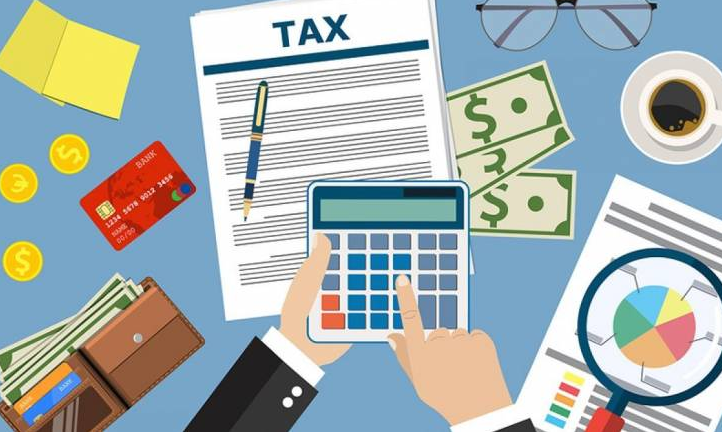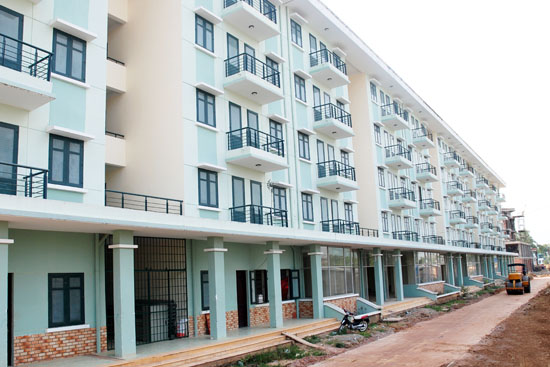What is other income? What are the other incomes subject to enterprise income tax in Vietnam? - Bich Lien (Tien Giang, Vietnam)

What is other income? Other incomes subject to enterprise income tax in Vietnam (Internet image)
Regarding this issue, LawNet responded as follows:
1. Other incomes subject to enterprise income tax in Vietnam
According to Clause 1, Article 3 of the Law on Enterprise Income Law 2008, taxable incomes include income from goods and service production and business activities and other incomes specified in Clause 2 of Article 3 of the Law on Enterprise Income Law 2008.
Thus, other income belongs to income subject to corporate income tax as prescribed.
2. Regulations on other incomes subject to enterprise income tax in Vietnam
Other incomes subject to enterprise income tax in Vietnam under Article 7 of Circular 78/2014/TT-BTC (amended in Circular 96/2015/TT-BTC and Circular 151/2014/TT-BTC) are as follows:
- Income from the transfer of capital or securities as guided in Chapter IV of Circular 78/2014/TT-BTC.
- Income from the transfer of real estate as guided in Chapter V of Circular 78/2014/TT-BTC.
- Income from the transfer of investment projects; transfer of the right to participate in investment projects; transfer of the right to explore, exploit and process minerals as prescribed by law.
- Income from asset ownership or use rights, including also copyright royalties in any form paid for asset ownership or use rights; royalties from intellectual property rights; and income from technology transfer in accordance with law.
Income from intellectual property right royalties or technology transfer is the total collected sum of money minus (-) the cost price or expense for the creation of the transferred intellectual property rights or technology, minus (-) the expense for maintaining, upgrading or developing the transferred intellectual property rights or technology and other deductible expenses.
- Income from asset lease in any form.
Income from asset lease is the turnover from the asset lease minus (-) expenses for asset depreciation, renovation, repair and maintenance, expense for the lease of assets for sublease (if any) and other deductible expenses related to the asset lease.
- Income from transfer or liquidation of assets (excluding real estate) and other valuable papers.
This income equals (+) turnover from asset transfer or liquidation minus (-) the residual book value of the transferred or liquidated asset at the time of transfer or liquidation, and deductible expenses related to the asset transfer or liquidation.
- Income from deposit or loan interests, including also interests on deferred and installment payments, credit guarantee charges and other charges under loan provision contracts.
+ In case income from deposit or loan interests is higher than expenses for payment of loan interests as prescribed, the remainder after the income- expense clearing may be included in other incomes for determining taxable income.
+ In case income from deposit or loan interests is lower than expenses for payment of loan interests as prescribed, the remainder after the income- expense clearing may be cleared against income from main production and business activities for determining taxable income.
- Income from the sale of foreign currency, which equals total proceeds from the sale of foreign currency minus (-) total buying price of the sold foreign currency amount.
Income from exchange differences, which is determined as follows:
In the tax year, the enterprise has exchange difference that occurs in the period and exchange difference because of reassessment of foreign currency debts payable at the end of the fiscal year:
+ In case an exchange difference occurs in the period and is related to revenues, expenses of the enterprise’s main business operation shall be included in expenses or revenues of the enterprise’s main business operation.
In case an exchange difference occurs in the period is not related to revenues, expenses of the enterprise’s main business operation, loss on exchange difference shall be included in financial expense, profit from exchange difference shall be included in other incomes when calculating taxable income.
+ Profit from exchange difference because of reassessment of debts paid in foreign currencies at the end of the fiscal year may be offset against loss on exchange difference because of reassessment of debts paid in foreign currencies at the end of the fiscal year.
After offsetting, profit or loss derived from exchange difference related to revenues, expenses of the enterprise’s main business operation shall be respectively included in revenues or expenses of the enterprise’s main business operation.
Profit or loss derived from exchange difference that is not related to revenues, expenses of the enterprise’s main business operation shall be respectively included in other incomes or financial expense when calculating taxable income.
With regard to foreign currency receivables and foreign currency loans that occur in the period, exchange difference included in deductible expenses or incomes is the difference between exchange rate at the time of debt or loan repayment and exchange rate at the time the debt or loan is initially recorded.
The aforesaid exchange differences do not include exchange differences because of reassessment of closing balance, including: cash, deposit, money being transferred, and foreign currency receivables
Recovered bad debts which have been written off.
- Payable debts of unidentifiable creditors.
- Previous years’ omitted incomes from production and business activities, which are now discovered.
- If fines or compensations received by enterprises from their partners for contract breaches or rewards for good realization of commitments under contracts are higher than those paid by these enterprises for their contract breaches (these fines are other than those paid for administrative violations in accordance with the law on handling of administrative violations), the remainder after the clearing may be included in other income.
If fines or compensations received by enterprises from their partners for contract breaches or rewards for good realization of commitments under contracts are lower than those paid by these enterprises for their contract breaches (these fines are other than those paid for administrative violations in accordance with the law on handling of administrative violations), the remainder after the clearing may be deducted from other income.
If there is no other income in a year, the remainder may be deducted from income from production and business activities.
Revenues from the above-said fines and compensations exclude fines and compensations already recorded as decrease in the construction value in the stage of investment.
- Differences from the revaluation of assets as prescribed to contribute capital or transfer assets upon division, splitting, consolidation, merger or conversion (except for equitization or restructuring of the enterprises whose charter capital is wholly held by the state) shall be specifically determined as follows:
+ Increase or decrease resulting from the revaluation of assets is the difference between the re-evaluated value and the residual book value of assets and shall be included once in other incomes (for increase) or deducted from other incomes (for decrease) in a tax period for determining taxable incomes of businesses having their assets re-evaluated;
+ Increase or decrease resulting from the revaluation of land use rights (hereinafter referred to as land) for: capital contribution (in which the land transferee may gradually aggregate this value with deductible expenses), transfer upon division, splitting, consolidation, merger or conversion;
Or for capital contribution to investment projects to build houses and infrastructure facilities for sale shall be included once in other incomes (for increase) or deducted from other incomes (for decrease) in a tax period for determining taxable incomes of the land transferor;
Particularly, the increase resulting from the revaluation of land for the creation of fixed assets used in production and business activities which must not be depreciated or gradually aggregated with deductible expenses may be gradually included in other incomes of the land transferor for up to 10 years from the year in which the land is contributed as capital.
The land transferor shall notify the number of years they will aggregate the increase with other incomes when making the declaration of corporate income tax of the starting year of declaration of this income (the year in which the land to be contributed as capital are re-evaluated).
In case after capital contribution, businesses continue to transfer capital in the form of land (including also the case of capital contribution ahead of the 10-year time limit), the income from the transfer of capital in the form of land shall be calculated and declared for tax payment as income from real estate transfer.
The difference resulting from the revaluation of land includes: the difference between the re-evaluated value and book value of land if land use term is indefinite, or the difference between the re-evaluated value and value of land that remains after aggregation with income if land use term is limited.
+ Businesses that receive assets contributed as capital or assets transferred upon division, splitting, consolidation, merger or conversion of the company may depreciate such assets or gradually aggregate them with expenses according to the revaluation price (unless the value of land use rights is ineligible for depreciation or aggregation with expenses under regulations).
Donations and gifts in cash or in kind; income received in cash or in kind from financing sources; income received from marketing support, expense support, payment discount, promotional prizes and other supports.
For incomes received in kind, the value of these incomes shall be determined according to the value of similar goods or services at the time of receipt.
- Sums of money, property and material benefits received by enterprises from organizations and individuals as agreed or contracted in accordance with the civil law when enterprises had over their land areas for relocation of their production and business facilities, after subtracting related expenses, such as expenses for relocation (transportation and installation costs), the residual value of fixed assets and other expenses (if any).
Sums of money, property and material benefits received by enterprises under the State policy and approved by competent state agencies for relocation of their production facilities, shall be managed and used in accordance with relevant laws.
- Amounts pre-deducted as expenses but left unused or not fully used in the deduction period which are not accounted by enterprises as decrease in expenses; refunded provisions for warranty of construction works.
- Incomes related to goods sale or service provision which are not included in turnover, such as bonus for quick clearance of ships, tips for food and drink catering or hotel services, after subtracting expenses for generating such incomes.
- Income from the sale of scraps and discarded products, after subtracting recovery and sale expenses, which shall be determined specifically as follows:
+ In case enterprises generate the income from the sale of scraps and discarded products generated in the production of products eligible for CIT incentives, such income is eligible for CIT incentives.
+ In case enterprises generate the income from the sale of scraps and discarded products generated in the production of products ineligible for CIT incentives, such income shall be accounted as other income.
- Refunded import duty or export duty amounts on actually imported or exported goods right in the year of CIT finalization may be accounted as deductible expenses in that year.
In case refunded import duty or export duty amounts on actually imported or exported goods are for previous years of CIT finalization, they shall be accounted as other incomes of these years.
If such income is directly related to a production or business sector currently eligible for CIT incentives, it is eligible for such incentives.
If such income is not directly related to the production or business sector currently eligible for CIT incentives, it shall be accounted as other income.
- Incomes from the contribution of equity capital, contribution of capital to joint ventures or economic associations at home which are divided from pre-CIT incomes.
- In case the enterprise admits a new capital contributor whose contributed capital is higher than the value of capital he/she is obliged to contribute:
If such positive difference is owned by the enterprise and used to supplement the enterprise’s capital, it will not be deductible when calculating corporate income tax incurred by the receiving enterprise.
If such positive difference is divided among old contributors, it will be considered incomes of old contributors
- Other incomes as provided by law.
- Key word:
- enterprise income tax in Vietnam
 Article table of contents
Article table of contents





.Medium.png)
.Medium.png)
.Medium.png)
.Medium.png)
